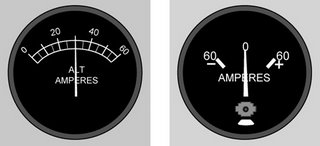Runup saves the day
 After we pack up we decide to make alternate plans and head for the beach instead. One of the perks of living in California. As we lay on the beach of course at least about a dozen planes and two helicopters (see left) soar by overhead to which my honey says..."look they're rubbing it in". Of course, like everyone I start questioning.."but what if I had turned on the pitot heat. That draws a ton of power. Maybe that would have given me an indication". Make a long story short we had a great day at the beach, spotted a group of 5 sea otters and for the first time saw wales spouting on their migration up the coast. Another reminder to make the best of each day and accept the curveballs we receive. I wouldn't have traded that day for anything...well maybe a flight to Mariposa.
After we pack up we decide to make alternate plans and head for the beach instead. One of the perks of living in California. As we lay on the beach of course at least about a dozen planes and two helicopters (see left) soar by overhead to which my honey says..."look they're rubbing it in". Of course, like everyone I start questioning.."but what if I had turned on the pitot heat. That draws a ton of power. Maybe that would have given me an indication". Make a long story short we had a great day at the beach, spotted a group of 5 sea otters and for the first time saw wales spouting on their migration up the coast. Another reminder to make the best of each day and accept the curveballs we receive. I wouldn't have traded that day for anything...well maybe a flight to Mariposa.I called the club's office today just to find out and to learn from the experience. Turns out that one of the alternator wires had come loose. It took the club's mechanic about 10 minutes to fix so it will never come loose again, but the connection had at best been intermittent. We very likely would have lost alternator power on this flight. We would have lost several of the instruments including the GPS and radios, but we would have kept on flying. Not an experience I would have wanted with the family on their first flight out. A thorough preflight and a no-go decision saved the day. That's why we train. In retrospect, the experience helped me review the electrical system, gain confidence in my abilities and I still would have called it the correct call even if it had turned out to be nothing.
In the process I found that not everybody is familiar with the concept of a load meter (left) vs. an ammeter (right). So here is a little summary.

Ammeter: There are two types, the charge/discharge and the load. The charge -discharge will remain centered so long as the system output can meet the system demand. Beyond this point the needle will indicate a discharge and use of battery power. The load type of ammeter will begin near zero and rise as more electrical load is put online. The voltage warning light will indicate if the load requirement is beyond the alternator's ability to produce. The load meter reflects the actual electrical load as it is turned on. A load ammeter at zero or discharge is saying that you are using battery power The ammeter is an essential element of any pilot's instrument scan. It should be a part of the pre-takeoff, prelanding, and checkpoint checklists.
A pretty good summary on electrical systems is posted here.
Still in the mood to learn more? Here is a writeup on electrical system failures.


0 Comments:
Post a Comment
<< Home